Sea tide warning for walkers after RNLI rise in rescues
- Published
The RNLI is expecting more rescues off the Welsh coast this summer
People walking around Wales' shoreline have been warned of the dangers after lifeboat crews last year saved 70% more people than before Covid.
The RNLI said it was anticipating its "busiest summer yet" as UK staycations rocket due to ongoing travel restrictions and foreign travel fears.
The number of people getting cut off by the tide in Wales is also almost double the UK average.
The RNLI urged walkers to be "prepared".
With sunshine forecast for this bank holiday weekend and people "wanting some fresh sea air" after the winter Covid lockdown, coastal areas and Wales' popular coastal path are expected to become busier - especially when all accommodation opens before the Spring bank holiday.
The RNLI - which has 30 stations around the Welsh coast between Penarth and Flint - said its crews saved the lives of 24 people between June and August 2020, compared with 14 the year before.
Data for the entire of 2020 shows the majority of the 991 people rescued in Wales, from 918 call-outs, were those out "walking and running and not expecting to end up in the water".
Regular visitors say it can be a dangerous area
RNLI lifeboats launched 115 times for people cut off by the tide in its Wales and north-west of England region.
Crews were dispatched 112 times to people who needed to be rescued after slipping or falling, which they said was "significantly higher than anywhere else in the UK and Ireland".
"A lot of the incidents we are called to can be really simply avoided by knowing that tides come in and out twice a day and locations can look different when the tide comes in," said Chris Cousens of the RNLI.

Mumbles Lighthouse at the opening of Swansea Bay has a causeway out to it at low tide
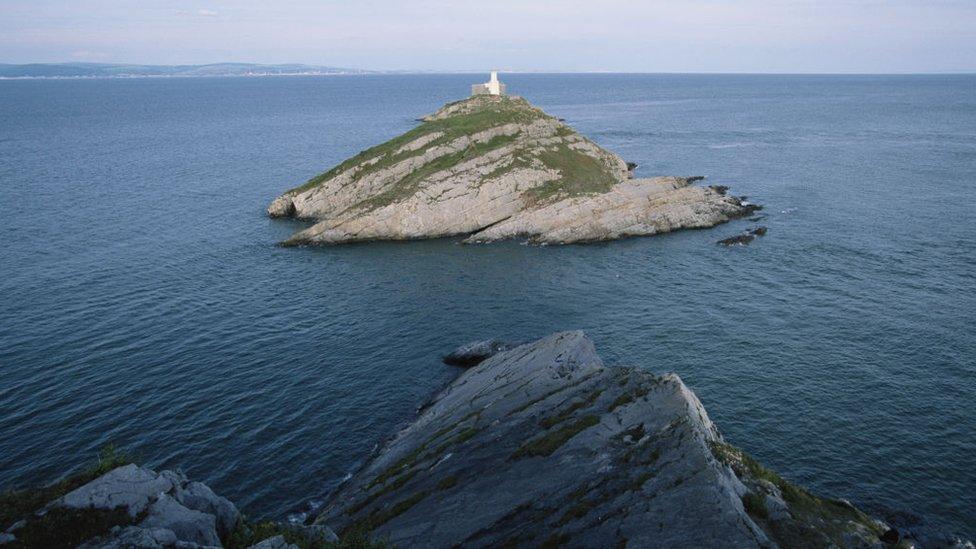
But at high tide the 227-year-old lighthouse is cut off by the sea
Mr Cousens said lifeboat crews "regularly" and "consistently" had shouts from people cut off from the tide at causeways, such as at Sully Island in the Vale of Glamorgan, Worm's Head on the Gower Peninsula and near Mumbles Lighthouse in Swansea.
He also warned of the dangers of "vast expanses of sandy beach" such as that at Rhyl beach on the north Wales coast.
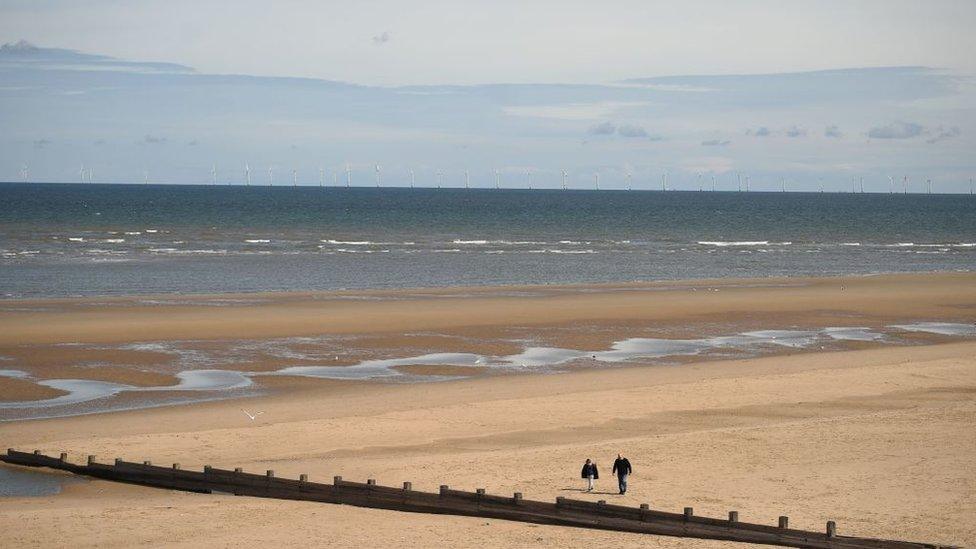
The two-mile beach at Rhyl has made the Denbighshire resort a popular seaside spot
"It looks like a flat beach to the naked eye when the tide has gone out a long way, " said Mr Cousens, the RNLI's water safety lead for Wales.
"It looks perfectly inviting for a long walk and you think the tide is not going to affect you and all of a sudden it has filled in gullies around a sandbank you're on."
That two-mile beach, like others at popular resorts on the Welsh coast, are guarded by RNLI lifeguards. In 2020, they attended 1,046 incidents and helped 2,673 people.
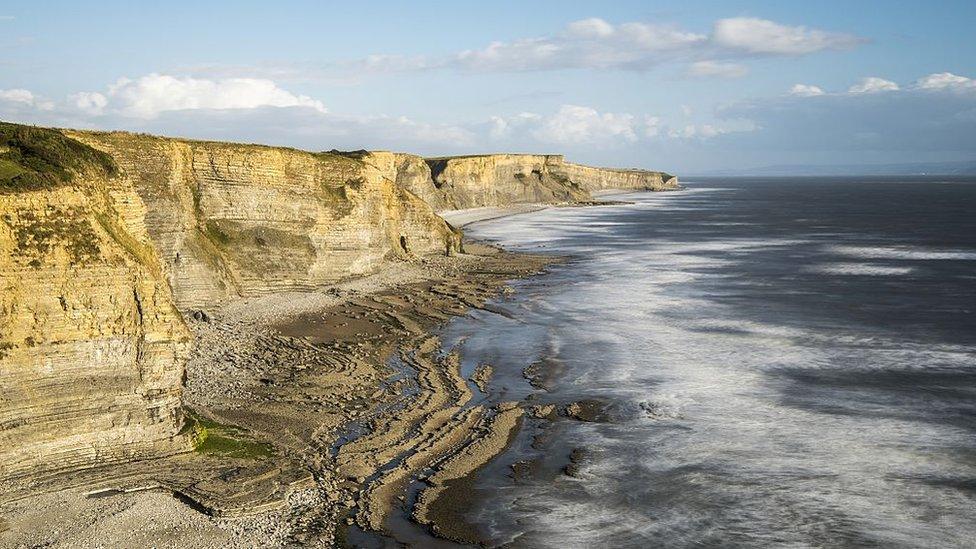
Dunraven Bay at Southerndown is popular with fossil hunters and has a large sandy beach
Lifeboat crews are also called to rescue people who have been "cut off going around a headland to explore another bay", like at Southerndown in the Vale of Glamorgan.
"That is a great thing to do if the tide is dropping - and if you're not sure if the tide is dropping, probably don't take that risk," said Mr Cousens.
Watch a BBC reporter try out the RNLI's 'float to live' technique
He also said lifeboat crews at Burry Port near Llanelli had regular calls to people cut off by the tide along the Carmarthenshire coast and across the Loughor estuary on the Gower.
"Certain places are more prevalent than others but it is really a good idea if you're going on a coastal walk anywhere in Wales to understand what the tide is doing as it varies massively."

RNLI lifeboats helped rescue three people cut off by the tide near Morfa Bychan in August 2019
The charity has called on walkers and hikers to help "take responsibility" for their own safety.
"We urge everyone to check tide times and weather conditions." said Mr Cousens.
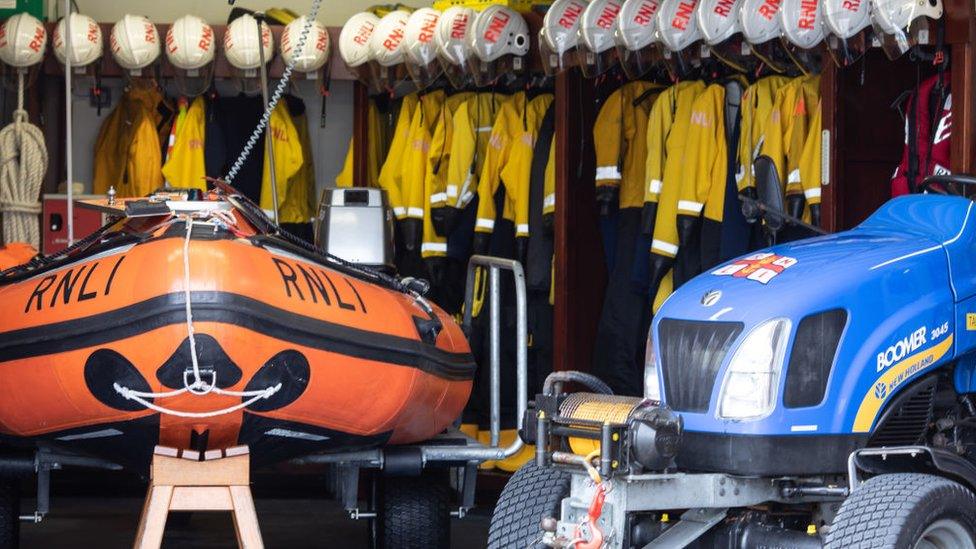
The RNLI has 30 stations around the Welsh coast between Penarth and Flint
"Let someone know where you are going and what time you are expected home so they can raise the alarm if you're overdue. Take a mobile phone and, if you get into difficulty, dial 999 and ask for the coastguard.
"The tide is something to marvel at but something to be cautious of."
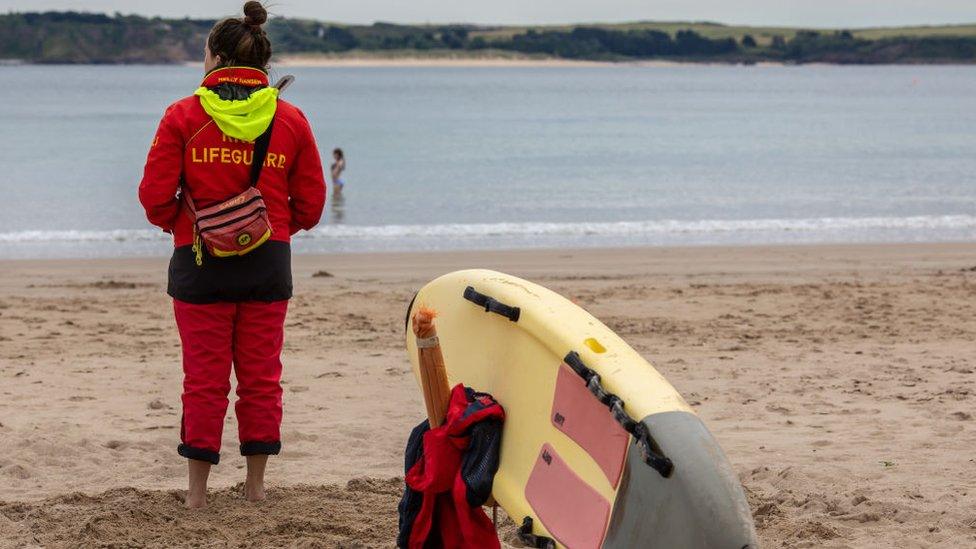
RNLI lifeguards attended 1,046 incidents in 2020 and helped 2,673 people.
With more staycations this year than before the coronavirus pandemic, Mr Cousens said the projected occupation rate of holiday accommodation in Wales was pointing to a "particularly busy summer this year".
"Last year, we were really busy between June and August but we're anticipating a busier summer than we may ever have had this year," he added.
Related topics
- Published13 February 2021
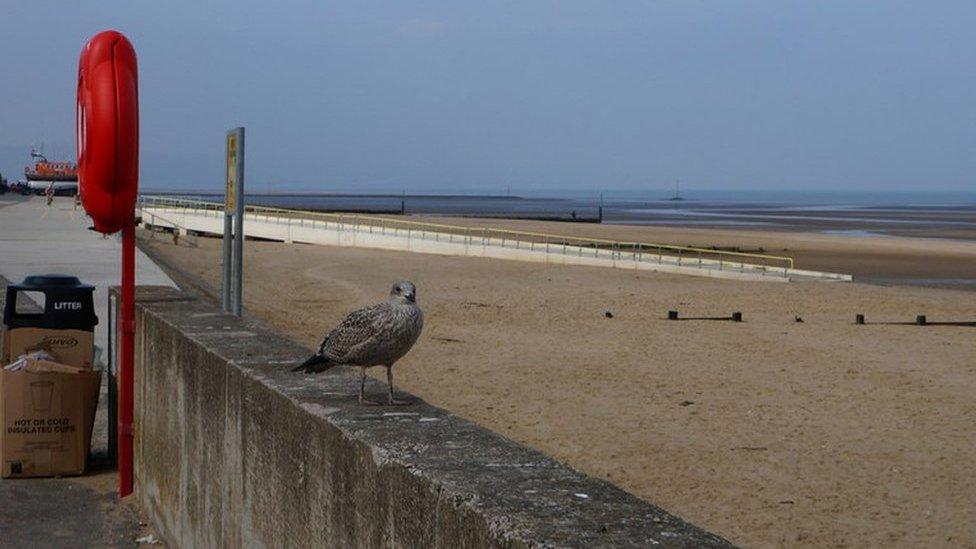
- Published20 January 2021
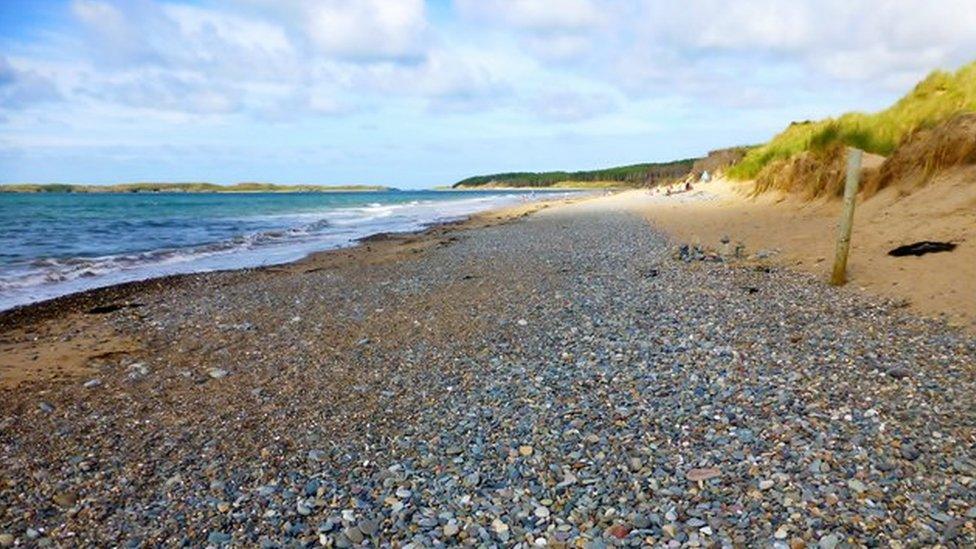
- Published31 August 2020
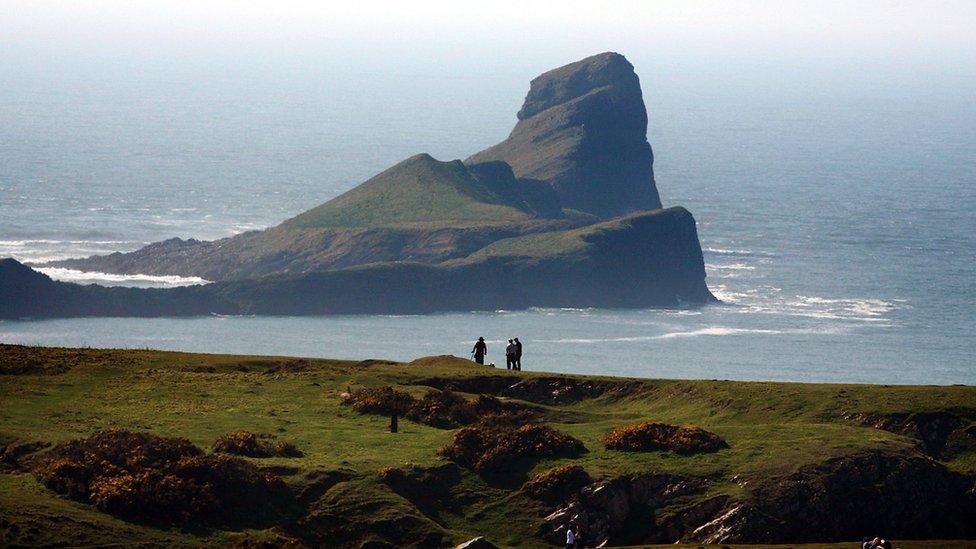
- Published25 May 2017

- Published18 June 2014
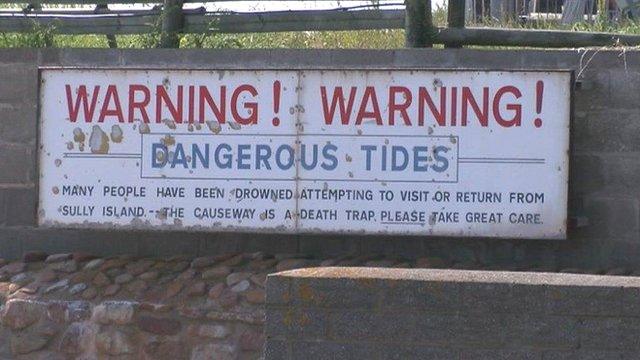
- Published18 June 2014

- Published1 August 2011
